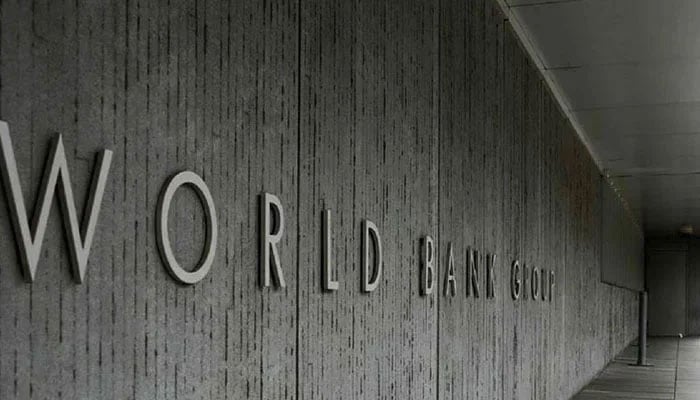Our Terms & Conditions | Our Privacy Policy
WB’s new poverty threshold pushes Pakistan’s poverty rate to 44.7%

An undated image of World Bank Headquarters in Washington DC. — AFP
ISLAMABAD: The World Bank (WB) has increased poverty thresholds for lower-middle-income countries from $3.65 to $4.20 per day per person, resulting in poverty levels of 44.7 per cent in the population living below the poverty line in Pakistan.
With this change in threshold but without altering methodology, the level of poverty in Pakistan has gone up from 39.8pc to 44.7pc population on the basis of official data for fiscal year 2018-19.
Because of a change in the threshold going up to $4.20 per day on the basis of Power Purchase Parity (PPP), the poverty level has gone up in Pakistan. However, the WB used the population figure of 2018-19 on the basis of the 2017 census, not on the basis of the latest population census held in Pakistan in 2023.
If the previous population census of 2017 is taken into account, when headcount stood at over 206 million, the absolute number of people living below the poverty line increased from 82.38 million to 92.5 million people in the trap of poverty in $4.20 per day per person.
Although the WB has updated its international poverty line, no latest official poverty figure is available in Pakistan. In the upcoming Economic Survey for 2024-25, scheduled to be unveiled on June 9, 2025, just one day ahead of the next budget announcement, there will be no official poverty figure incorporated in it. There will be no latest unemployment figure in the coming Economic Survey. The Pakistan Bureau of Statistics (PBS) has neither completed the Household Income Expenditure Survey (HIES) to estimate the latest official poverty figure nor undertook the Labour Force Survey (LFS) to calculate the unemployment figure.
To a question, Tobias Haque, the WB’s Lead Economist on Pakistan, said that the government of Pakistan did not approach the WB for budgetary support although the WB was happy on the direction of reform process in Pakistan.
WB Senior Economist on Poverty and Equity Christina Wieser stated at the launch of the updated poverty line that the World Bank was updating its global poverty lines to reflect changes in the cost of living and consumption habits of people around the world, based on newly available data. The new poverty lines are $3 per person per day for low income countries, $4.20 for lower-middle-income countries, and $8.30 for upper-middle-income countries. These lines are based on 2021 purchasing power parity rates, as well as updated national poverty lines.
For Pakistan, 16.5pc of the population lived below the $3.00 international poverty rate in 2018-19 (latest available survey year) and 44.7pc below the more relevant lower-middle-income line of $4.20. Pakistan is among the countries experiencing the largest changes in poverty when transitioning to the 2021 PPPs based on the low-income international poverty line.
For Pakistan, the poverty rate based on the new $3 International Poverty Line (IPL-2021 PPP) is 16.5pc, compared to 4.9pc under the previous $2.15 line (2017 PPP). About 82pc of this increase is due to the higher value of the new IPL reflecting increases in the national poverty lines of comparator countries, with the rest explained by price increases in Pakistan between 2017 and 2021 reflected in the updated PPPs.
The poverty rate under the $4.20 IPL line rose from 39.8 to 44.7pc. The new IPL only affects the level of poverty, trends in poverty remain unchanged. Pakistan is among the countries experiencing the largest changes in poverty when transitioning to the 2021 PPPs based on the low-income international poverty line. This significant shift in poverty rates under the LIC line, compared to the LMIC and upper-middle-income country (UMIC) lines, is due to a concentration of households with welfare levels between $PPP2.15 and $PPP3.00, which is near the international poverty line.
These updates to the international poverty lines are based on 2021 purchasing power parity (PPP) data from the International Comparison Programme (ICP) and ensure that poverty estimates remain accurate and comparable across countries. The methodology remains consistent with past updates, continuing a practice that began with the introduction of dollar-a-day line in 1990.
“The revisions help position Pakistan’s poverty levels in a global context and underscore the importance of continued efforts to reduce vulnerability and improve resilience,” said Najy Benhassine, World Bank Country Director for Pakistan. “The new figures reflect updated international thresholds and improved data from other countries, not a deterioration in living standards.”
For domestic policy and program targeting, the national poverty line remains unchanged and continues to serve as the primary benchmark for assessing poverty within Pakistan. The underlying Household Income and Expenditure Survey (HIES) 2018/19 data used for both national and international estimates also remain the same. While international poverty lines are essential for tracking global progress and comparisons, national lines remain more appropriate for informing country-specific policy decisions.
[ad_1]
Images are for reference only.Images and contents gathered automatic from google or 3rd party sources.All rights on the images and contents are with their legal original owners.
[ad_2]


Comments are closed.